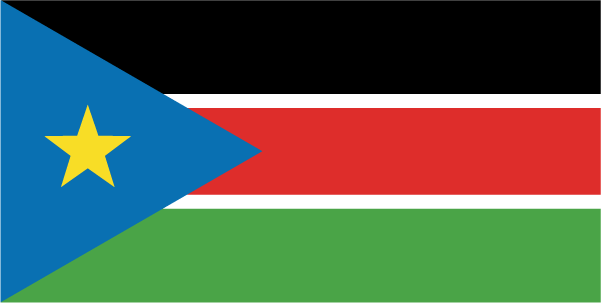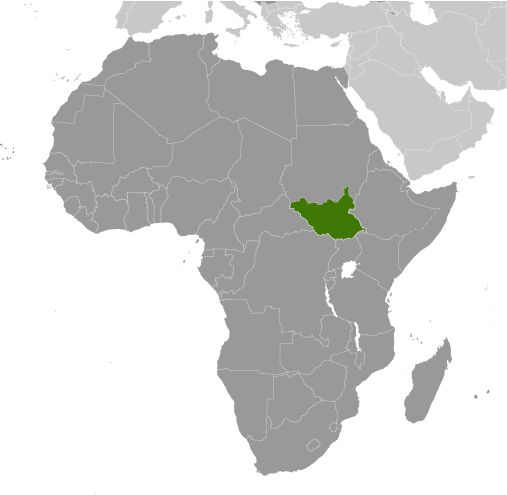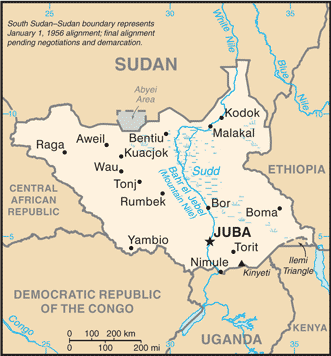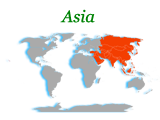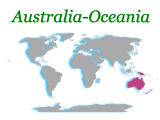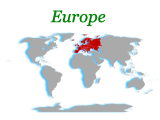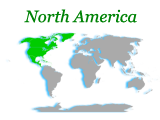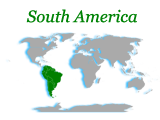Egypt attempted to colonize the region of southern Sudan by establishing the province of Equatoria in the 1870s. Islamic Mahdist revolutionaries overran the region in 1885, but in 1898 a British force was able to overthrow the Mahdist regime. An Anglo-Egyptian Sudan was established the following year with Equatoria being the southernmost of its eight provinces. The isolated region was largely left to itself over the following decades, but Christian missionaries converted much of the population and facilitated the spread of English. When Sudan gained its independence in 1956, it was with the understanding that the southerners would be able to participate fully in the political system. When the Arab Khartoum government reneged on its promises, a mutiny began that led to two prolonged periods of conflict (1955-1972 and 1983-2005) in which perhaps 2.5 million people died - mostly civilians - due to starvation and drought. Ongoing peace talks finally resulted in a Comprehensive Peace Agreement, signed in January 2005. As part of this agreement the south was granted a six-year period of autonomy to be followed by a referendum on final status. The result of this referendum, held in January 2011, was a vote of 98% in favor of secession. Independence was attained on 9 July 2011.
Locaion
East-Central Africa; south of Sudan, north of Uganda and Kenya, west of Ethiopia
Geographic Co ordinates
8 00 N, 30 00 E
Land Boundries
Total:5,413 km
Border countries:Central African Republic 989 km, Democratic Republic of the Congo 639 km, Ethiopia 934 km, Kenya 232 km, Sudan 2,184 km, Uganda 435 km
Geography - note
The Sudd is a vast swamp in South Sudan, formed by the White Nile, comprising more than 15% of the total area; it is one of the world's largest wetlands
Population
8,260,490 (according to disputed 2008 census; actual number may be as high as 9.28 million) (2008)
Country comparison to the world:92
Nationality
Noun:South Sudanese (singular and plural)
Adjective:South Sudanese
Ethnic groups
Dinka, Kakwa, Bari, Azande, Shilluk, Kuku, Murle, Mandari, Didinga, Ndogo, Bviri, Lndi, Anuak, Bongo, Lango, Dungotona, Acholi
Religions
animist, Christian
Languages
English (official), Arabic (includes Juba and Sudanese variants) (official), regional languages include Dinka, Nuer, Bari, Zande, Shilluk
Country Name
Conventional long form:Republic of South Sudan
Conventional short form:South Sudan
Government Type
republic
Capital
Name:Juba
Geographic coordinates:04 51 N 31 37 E
Time difference:UTC+3 (8 hours ahead of Washington, DC during Standard Time)
Administrative divisions
10 states; Central Equatoria, Eastern Equatoria, Jonglei, Lakes, Northern Bahr el Ghazal, Unity, Upper Nile, Warrap, Western Bahr el Ghazal, Western Equatoria
Independence
9 July 2011 (from Sudan)
National Holiday
Independence Day, (9 July 2011)
Constitution
Transitional Constitution of the Republic of South Sudan 2011, effective 9 July 2011
Executive branch
Chief of state:President Salva KIIR Mayardit (since 9 July 2011); Vice President Riek MACHAR (since 10 July 2011); note - the president is both chief of state and head of government
Head of government:President Salva KIIR Mayardit (since 9 July 2011); Vice President Riek MACHAR (since 10 July 2011)
Cabinet:National Council of Ministers; appointed by the president and approved by a resolution from the Legislative Assembly
(For more information visit the World Leaders website)
Elections:president elected by popular vote for a four year term; election last held on 11-15 April 2010 (next to be held in 2015)
Election results: Salva KIIR Mayardit elected president; percent of vote - Salva KIIR Mayardit 93%, Lam AKOL 7%
Legislative branch
bicameral National Legislature consists of the National Legislative Assembly (332 seats) and the Council of States (50 seats); members serve four-year terms
Elections: National Legislative Assembly - last held 11-15 April 2010 (next to be held in 2015); Council of States - established and members appointed 1 August 2011
Election results:National Legislative Assembly - percent of vote by party - NA; seats by party - SPLM 251, SPLM-DC 6, NCP 3, independent 6, unknown 66; Council of States - seats by party - SPLM 20, unknown 30
note: a presidential decree of 1 August 2011 reconstituted the National Legislative Assembly, as permitted under Article 94 of the Transitional Constitution, to include the 170 members elected 11-15 April 2010, 96 former members of the National Assembly of the Republic of Sudan, and 66 newly appointed members for a total of 332; a presidential decree also established a Council of States, initially with 50 members - the 20 former members of the Council of States of the Republic of Sudan plus an additional 30 appointed representatives
Judicial branch
Supreme Court, Courts of Appeal, High Courts, County Courts
Political Parties and Leaders
Sudan People's Liberation Movement or SPLM; National Congress Party or NCP; Sudan People's Liberation Movement for Democratic Change or SPLM-DC
International organization participation
AU, IFRCS, Interpol, ITU, UN, UNCTAD, UNESCO, UPU
Diplomatic representation in the US
Chief of mission:Ambassador (vacant), head of mission Ezekiel Lol GATKOUTH
Chancery:1233 20th St. NW, Suite 602, Washington, DC 20036
Telephone:[1] (202) 293-7943
FAX:[1] (202) 293-7941
Diplomatic representation from the US
Chief of mission:Ambassador (vacant), Charge d' Affaires R. Barrie WALKLEY
Embassy:Juba
Flag description
three equal horizontal bands of black (top), red, and green; the red band is edged in white; a blue isosceles triangle based on the hoist side contains a gold, five-pointed star; black represents the people of South Sudan, red the blood shed in the struggle for freedom, green the verdant land, and blue the waters of the Nile; the gold star represents the unity of the states making up South Sudan
note: resembles the flag of Kenya; one of only two national flags to display six colors as part of its primary design, the other is South Africa's
